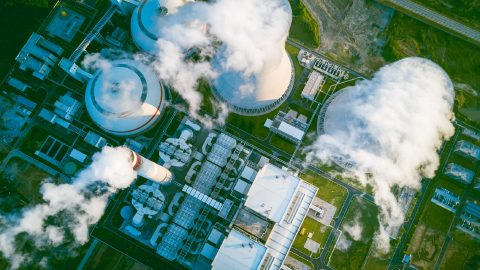The coal industry might see even more closures following new rules from the Environmental Protection Agency (EPA). Last month, the EPA introduced new emission standards for coal-fired power plants. These rules aim to cut carbon pollution, a major cause of global warming, by 90%.
Experts like Catherine Hausman, an environmental economist at the University of Michigan, believe this is a significant step. “We’ve been waiting for regulations like this for a long time,” she said. “It’s a landmark moment.”
The new rules mean that most of the country’s coal plants could close by 2045. This is a big deal because coal has been a major source of electricity for a long time. Twenty years ago, coal provided about half of the country’s electricity. Today, that number is below 17%.
The drop in coal usage has led to a big decrease in emissions. In the past 10 years, carbon emissions from coal plants have been cut by more than half. Some plants, like the Indian River facility in Delaware, reduced their emissions by 98%. However, a few plants, like Ebensburg Power Company in Pennsylvania, actually increased their emissions.
One reason emissions have fallen is that many coal plants are running less often. While new technologies exist to capture and store carbon, they are not widely used yet.
The shift away from coal has been driven by cheaper and cleaner alternatives like natural gas, wind, and solar power. Natural gas prices have dropped significantly since the fracking boom began around 2008. Wind and solar power are now also cheaper to produce than coal.
In 2023, natural gas accounted for 43% of U.S. electricity, while renewables made up more than 21%. By 2050, renewables are expected to supply 44% of the country’s electricity, with natural gas at 34% and coal at 10% or less.
The new EPA rules require coal plants that stay open beyond 2039 to cut their emissions by 90% by 2032. Plants that close by 2032 are exempt from these new standards. This means many plants might choose to shut down rather than spend money on expensive upgrades.
One way to reduce emissions is through carbon capture and storage (CCS). This technology traps carbon dioxide and stores it underground. However, only one U.S. plant, the Petra Nova facility in Texas, uses this technology on a large scale. The high cost and technical challenges make it difficult for widespread use.
The Kemper Project in Mississippi was supposed to be a “clean coal” plant with CCS, but after spending over $7.5 billion, the project was abandoned. The plant now burns natural gas instead.
Dan Brouillette, president of the Edison Electric Institute, argues that CCS isn’t ready for full-scale use. “There isn’t enough time to permit, finance, and build the necessary infrastructure by 2032,” he said.
Despite these challenges, supporters believe CCS is a crucial step towards reducing emissions. Catherine Hausman says the EPA’s new rules are realistic and necessary. “If plants find it too expensive to comply, it means those plants should close. We should then rely on cleaner energy sources.”
Overall, the new EPA rules signal a major shift in how the U.S. generates electricity. As coal plants close, the country will increasingly turn to cleaner, more sustainable energy sources.













